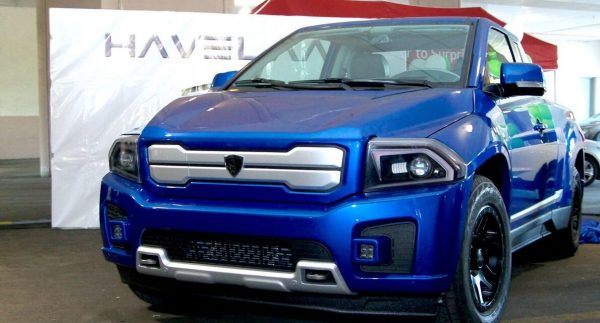
The NDP is proposing a National Automotive Strategy that leader Jagmeet Singh says will revitalize the Canadian auto sector. Singh has the right idea, but the few details he has released thus far suggests the NDP’s approach needs some serious tweaking.
Canada’s auto sector grew up as part of the branch plant economy that emerged after World War II. Manufacturing was dominated by subsidiaries of American corporations, though domestic suppliers were competitive in the supply chain, birthing parts suppliers like Magna International. The Auto Pact, signed in 1965, removed tariffs in return for production guarantees from the Big 3 (GM, Ford, Chrysler), ensuring that the Canadian industry remained an appendage of the US giants, accounting for two million autos built last year.
 Times have changed. China is now the big player, accounting for sales of 27 million units a year versus the United States with its 17.5 million, according to Statista.com. Last year, 23.5 million light-duty vehicles were made in China, compared to 17 million in North America and 19.2 million in the European Union.
Times have changed. China is now the big player, accounting for sales of 27 million units a year versus the United States with its 17.5 million, according to Statista.com. Last year, 23.5 million light-duty vehicles were made in China, compared to 17 million in North America and 19.2 million in the European Union.
More importantly, China has adopted an aggressive strategy to become “the Detroit of electric vehicles.” Growing domestic EV production, an electronics supply chain ideally suited to EV manufacturing, and national policies designed to encourage joint ventures with foreign firms while quickly developing the internal market gives China a healthy headstart over its competitors.
What is the point of Canada trying to be just another one of those competitors?
Singh, of course, is courting the NDP’s traditional auto worker constituency, which has been decimated by plant closures over the past decade. As a campaign tactic, a national automotive strategy makes perfect sense. Initiatives announced thus far include a $300 million auto innovation fund, transitioning government fleets to Canadian-made ZEVs, providing incentives for consumers to buy only made-in-Canada vehicles, and investigating the “causes and consequences of the trade deficit in automotive products with Mexico.”
Finally, “a New Democrat government will give Export Development Canada a stronger mandate to recruit and retain investment in automotive plants and export-focused manufacturing here in Canada.”

Revamping the status quo with a new focus on electric cars seems to be the intent of the NDP platform plank. Shouldn’t Canada be a bit more ambitious? If the global EV industry is still nascent, why not shoot higher?
For instance, China is handily winning the race to develop and deploy electric buses, according to Ray Wills, a professor with the University of Western Australia, with between 250,000 and 400,000 already on the road. Watch my video interview with Wills here.
Canada has at least one potential winner in this market niche. Winnipeg is home to New Flyer, one of North America’s largest bus manufacturers, with decades of experience designing electric buses. As cities around the world electrify their transit fleets, New Flyer could be Canada’s flagship for work vehicle manufacturing.
Speaking of work vehicles, startup Havelaar Canada introduced a pickup truck prototype – the Bison – two years ago. Head engineer Nathan Armstong told Energi Media:
If you think about electric pickup trucks, they’re difficult to make mechanically efficient because of the nature of the vehicle – big tired, high-ground clearance. The way we gain is on the utility side – great low-speed torque, a massive battery pack if you want to pull power out of it. You could run electric welder for weeks on this battery pack. If you want to pull tree stumps out of the ground, if you want to pull a trailer at low speeds through a field, pull a bail of hay on a trailer, it’s no problem. That’s a big plus for a pick up truck.
 Armstrong said in 2017 that falling battery costs (which were then $195 per kilowatt hour and have since dropped to less than $135 per kwh) would soon make the Bison much less to manufacture than the $58,000 Havelaar wanted to charge for a base model truck. He made an interesting point during the interview that southwestern Ontario would be the ideal location to manufacture the Bison because of the equipment and expertise available for body panels or seats, thanks to the existing supply chain.
Armstrong said in 2017 that falling battery costs (which were then $195 per kilowatt hour and have since dropped to less than $135 per kwh) would soon make the Bison much less to manufacture than the $58,000 Havelaar wanted to charge for a base model truck. He made an interesting point during the interview that southwestern Ontario would be the ideal location to manufacture the Bison because of the equipment and expertise available for body panels or seats, thanks to the existing supply chain.
EV-related opportunities also exist for Canada. Baerte de Brey, an expert in smart charging infrastructure, says that the Netherlands has become a leader in how to integrate EV batteries into the power grid to store electricity from renewable energy sources like wind and solar.
The constraint holding back Dutch development of this niche even faster? A shortage of engineers, designers, and related technical trades. The national government is trying to address the shortage, unsuccessfully thus far.
What opportunities might Canada identify that are related to integration or grid management? Is this an opportunity for provinces with hydropower like BC or Quebec to develop new industries and the high-tech jobs they require?
It would be nice to see Singh tie all these threads into a coherent vision about how Canada can seize opportunities created by the electrification of transportation, which is set to significantly accelerate during the 2020s. Done right, electrification might be a strategy for the entire country, not just vote-rich southern Ontario.


Be the first to comment